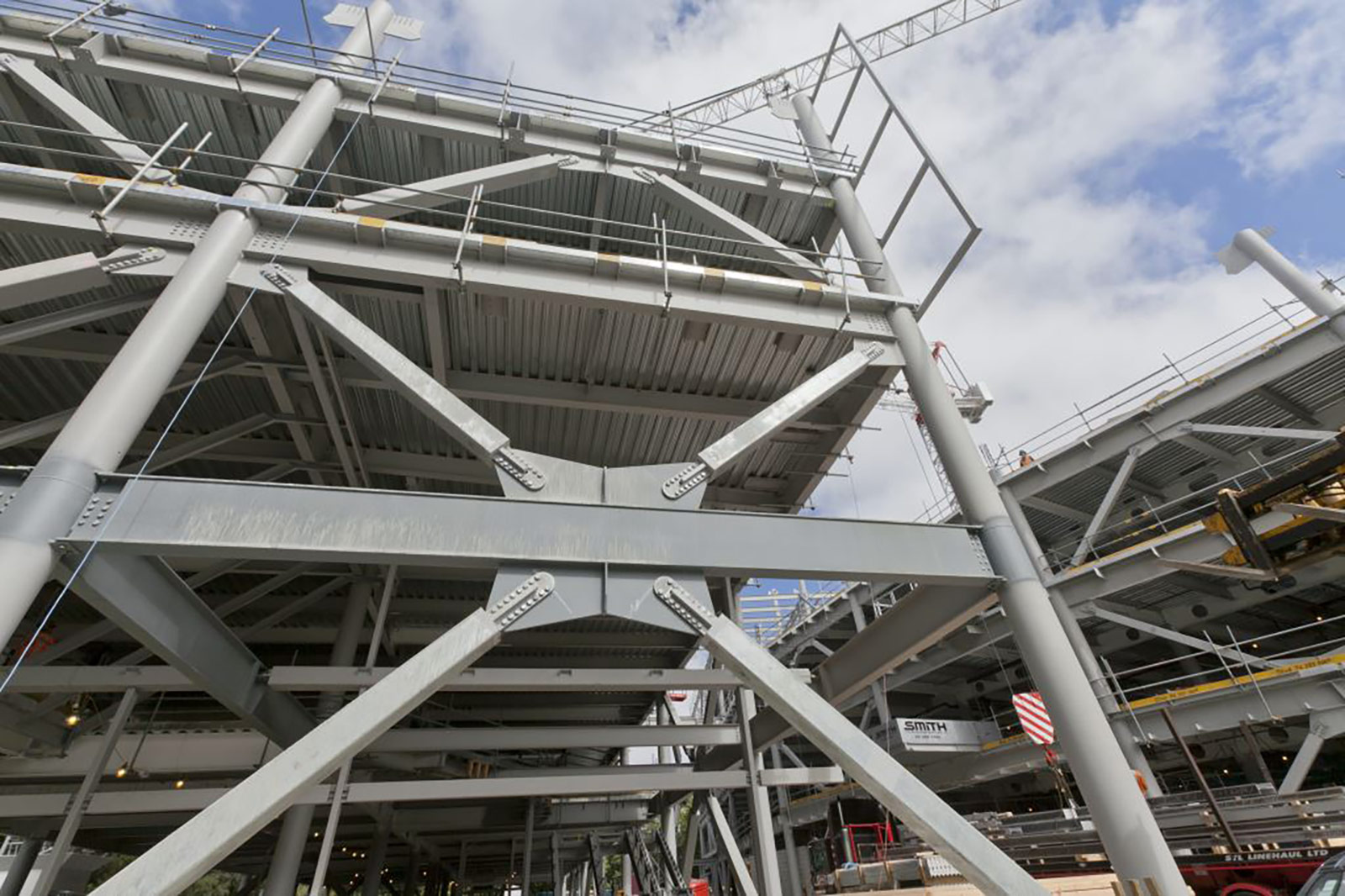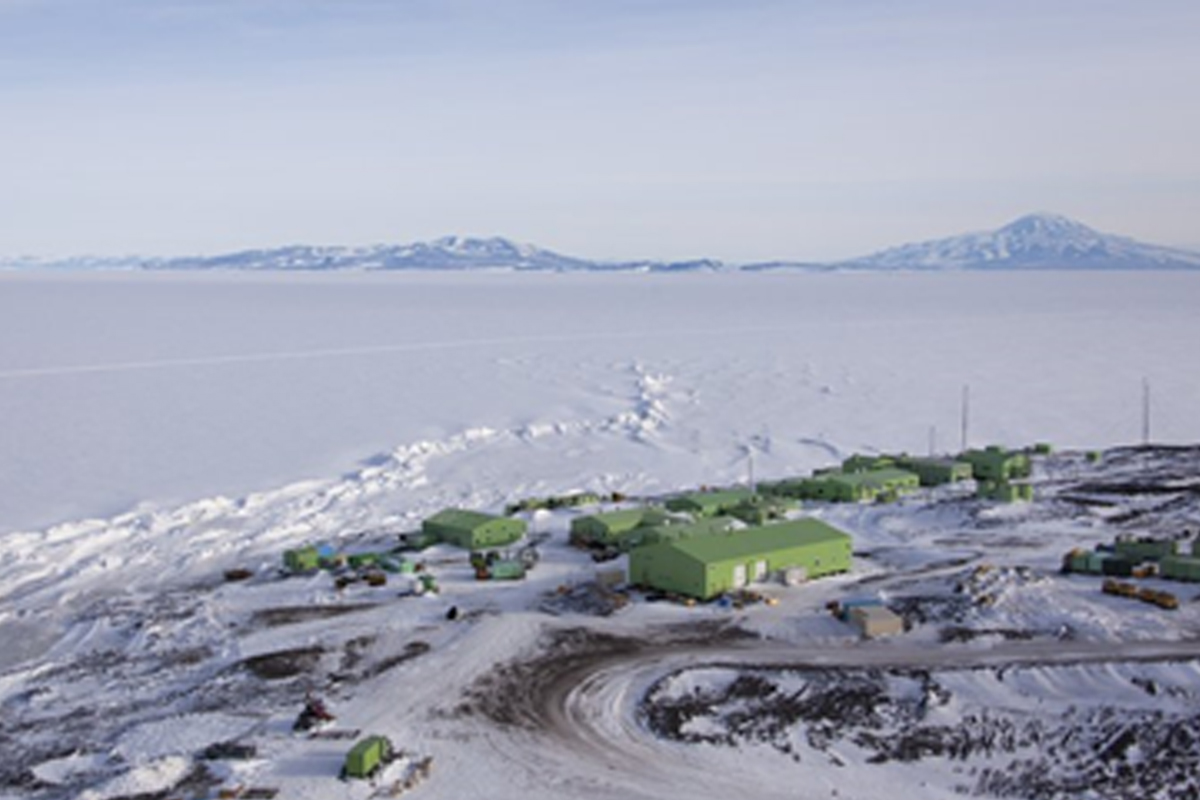In order to ensure in-service safety of steel structures, design engineers need to select steel grades that will remain ductile under the imposed conditions that include in-service loadings, fabrication induced conditions, seismic actions and service temperatures.
To achieve this, we’ve developed a new procedure to select steel grades manufactured to Australian and New Zealand standards in collaboration with the University of Wilhelmshaven and University of Sydney. It’s based on modified fracture mechanics procedure from the Eurocode, and the method extends to the cryogenic temperature range. It also includes New Zealand specific requirements for seismic loading rates.
This new procedure also presents recommendations for consideration in the development of new brittle fracture provisions for future versions of the Australian and New Zealand steel structures design standards NZS 3404.1, AS/NZS 5100.6 and AS 4100.

Materials selection requirements of NZS 3404.1
The current materials selection procedure is given in the design standards AS 4100, NZS 3404.1 and AS/NZS 5100.6. It’s based on test data on the notch toughness characteristics from a previous generation of steel products originally manufactured in Australia or New Zealand. The existing procedure is also limited to temperatures down to -40°C and doesn’t consider the effects of welding, detailing, stress utilisation, seismic loading rates, defects and other important factors.
Advanced material selection methodologies, such as the procedure of EN 1993-1-10 “Material toughness and through thickness properties” takes into account all of the above factors. The basis of this procedure is an Ultimate Limit State verification based on fracture mechanics for an accidental design situation for structural members in tension or bending. This procedure was adopted in order to develop fracture mechanics based selection requirements for AS/NZS steels used in steel structures.
The proposed design procedure considers local requirements for the steel products and specific service conditions such as seismic strain rates. The temperature range was extended down to -120°C, which is much lower than considered in many other international standards, allowing for temperature adjustments due to service and fabrication conditions.
These recommendations were developed by an international expert team including University of Wilhelmshaven, Prof Adolf Hobbacher; our General Manager Welding Centre Dr Michail Karpenko, General Manager Structural Systems Dr Stephen Hicks, and Masters Student Patrick Schneider; as well as The University of Sydney’s Prof Brian Uy.
New Zealand’s Scott Base project
The procedure has been put to the test on New Zealand’s Antarctic Scott Base research station project that could be set for a $150 million redevelopment. The project has some serious engineering challenges involved in building in the coldest place on earth where temperatures reach as low as -57°C and rise to several degrees above zero, and winds that get up to nearly 200km/h.
Selection of the steel for the redevelopment was challenging as current standards didn’t cover temperatures that low. However, our team have successfully developed recommendations for the selection of steel to avoid brittle fracture for Scott Base to overcome this. These recommendations will now form a part of the design manual for this upcoming piece of work.
What does this all mean for you?
At HERA, we’re confident that the proposed procedure will give a much more efficient utilisation of material than what is possible in NZS 3404.1, AS/NZS 5100.6 and AS 4100. Users will find that it’ll remove a great deal of conservatism that presently exists in current Australasian design practice.
The paper presents selection tables that can be considered for the development of new brittle fracture provisions for future versions of the Australian and New Zealand steel structures design standards. It proposes the fracture mechanics methodology for the selection of structural steel grades that should replace the old notch-ductile method used in current standards. A main limitations of this method is that it’s based on old test data on notch toughness characteristics of steels currently made in Australia or New Zealand. The applicability of this method to overseas steels or AS/NZS steels manufactured overseas is also limited (ref. AS/NZS 1554.1:2014 Table B1 Note 2).
Overall, this new procedure to select steel grades manufactured to Australian and New Zealand standards takes into account a modified fracture mechanics procedure of the Eurocode, and its recommendations can certainly influence the development of new brittle fracture provisions in NZS 3404.1, AS/NZS 5100.6 and AS 4100.
Excitingly, we’ve also started working on a second part of the paper that will address selection requirements for the overseas steels manufactured to EN, JIS and API standards – so stay tuned.
And as always, if you have any specific questions related to the implementation of the new steel selection procedure for your project, please get in touch!
